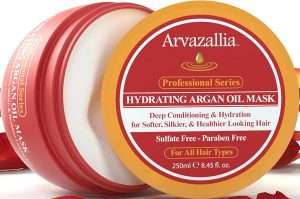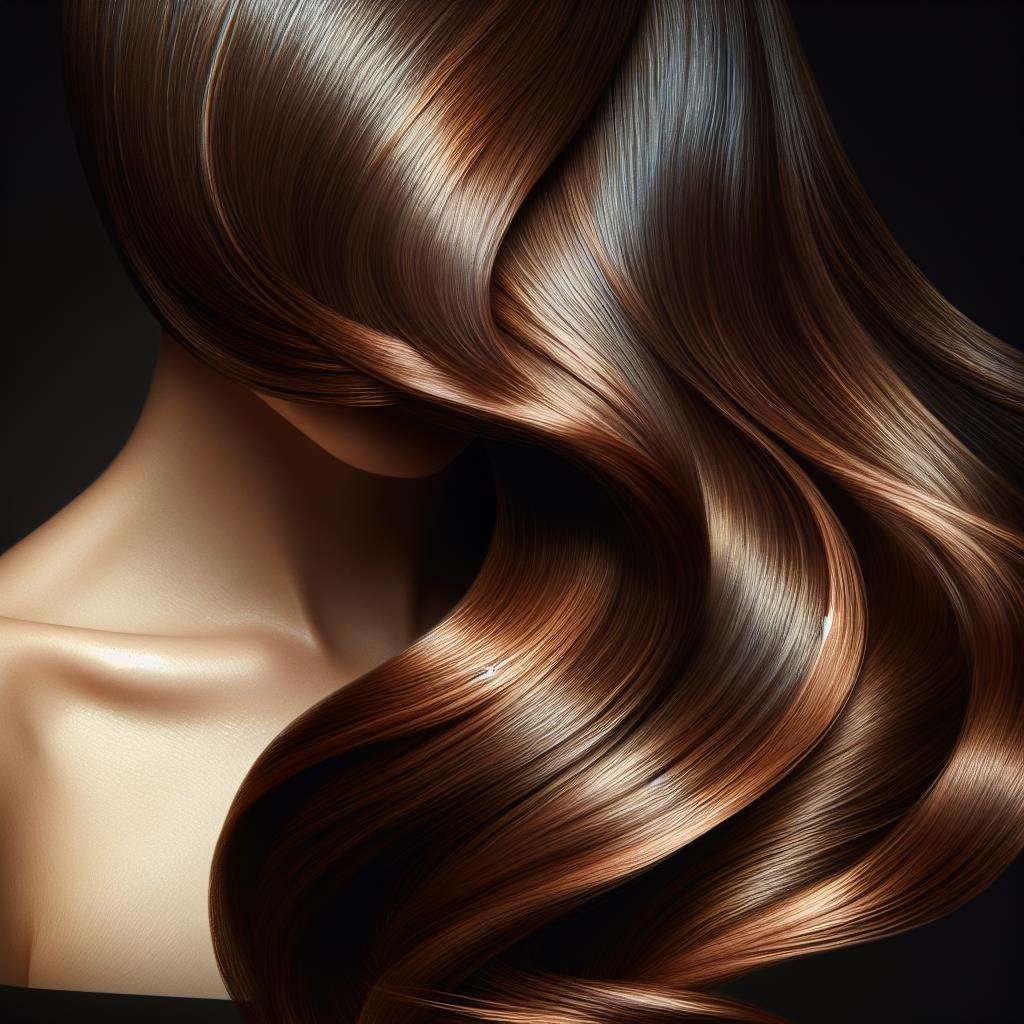How Long Should I Leave a Hair Mask for?
Hair masks are a popular tool in many hair care routines. They offer a deep conditioning treatment that can transform the health and appearance of your hair.
But how long should you leave a hair mask on for? This is a common question that many people have.
The answer isn’t as straightforward as you might think. It depends on several factors, including your hair type, the ingredients in the mask, and your specific hair needs.
In this article, we’ll guide you through the process of determining the optimal hair mask duration for you. We’ll also provide tips on how to use a hair mask effectively within your hair care routine.
Whether you’re a beginner or have been using hair masks for years, you’ll find valuable insights in this guide.

The BEST hair mask I’ve ever used! Let’s go Try!
Understanding Hair Masks and Their Benefits
Hair masks are intensive treatments that nourish and repair your hair. They are typically thicker and more potent than regular conditioners.
These masks are designed to penetrate deep into the hair shaft. They provide hydration, strengthen hair strands, and repair damage.
The benefits of using a hair mask can vary depending on the ingredients used. Some masks are designed to add shine, reduce frizz, or promote hair growth.
Regardless of your hair type or condition, there’s likely a hair mask that can enhance your hair’s health and appearance.
General Guidelines for Hair Mask Duration
When it comes to hair mask duration, there’s no one-size-fits-all answer. The optimal time can vary based on several factors.
However, as a general rule, most hair masks should be left on for about 10 to 20 minutes. This allows the mask to penetrate the hair shaft and deliver its benefits.
Some masks may recommend a longer duration, especially deep conditioning treatments. These can often be left on for up to an hour.
- 10-20 minutes: Standard hair masks
- Up to 60 minutes: Deep conditioning treatments
Remember, these are just guidelines. Always follow the instructions on the product packaging for the best results.
Factors Affecting Hair Mask Application Time
Several factors can influence how long you should leave a hair mask on. Understanding these can help you optimize your hair mask duration.
Firstly, your hair type and texture play a significant role. For instance, coarse or curly hair may require a longer application time than fine or straight hair.
Secondly, the ingredients and type of hair mask you’re using can affect the duration. Some masks are designed to work quickly, while others need more time to deliver their benefits.
Lastly, your hair’s current condition and your treatment goals also matter. If your hair is severely damaged or dry, you might need to leave the mask on longer.
- Hair type and texture
- Ingredients and hair mask types
- Hair condition and treatment goals
Hair Type and Texture
Different hair types and textures can absorb and react to hair masks in unique ways. For instance, fine hair can become easily weighed down by heavy masks.
On the other hand, coarse or curly hair might need more time to absorb the mask’s nutrients. This is due to the hair’s structure, which can make it harder for the mask to penetrate.
Therefore, it’s crucial to consider your hair type and texture when determining your hair mask duration.
Ingredients and Hair Mask Types
The ingredients in your hair mask can also affect how long you should leave it on. For example, masks with proteins or deep conditioning agents might need more time to work.
On the contrary, lighter masks or those with potent ingredients might work faster. Leaving these on for too long could lead to over-conditioning or even damage.
So, always check the ingredients and understand their functions when using a new hair mask.
Hair Condition and Treatment Goals
Lastly, your hair’s current condition and your treatment goals can influence your hair mask duration. If your hair is severely damaged, you might benefit from longer application times.
However, if you’re using a hair mask for regular maintenance, a shorter duration might suffice. Remember, the goal is to nourish your hair without overdoing it.
In conclusion, understanding these factors can help you find your optimal hair mask duration.
How to Properly Apply a Hair Mask
Applying a hair mask correctly is just as important as choosing the right duration. Proper application ensures that your hair absorbs the mask’s nutrients effectively.
Start by washing your hair with a gentle shampoo. This removes any product buildup and prepares your hair for the mask.
Next, towel-dry your hair lightly. A hair mask works best on damp, not soaking wet hair.
Now, apply the mask evenly throughout your hair. Pay special attention to the ends, which are often the most damaged.
How to UseHair Mask?
Step-by-Step Hair Mask Application
Start by sectioning your hair. This ensures even distribution of the mask.
Apply the mask to each section, starting from the roots and working your way down to the ends. Use a wide-tooth comb to distribute the mask evenly.
Once your hair is fully coated, put on a shower cap. This helps to trap heat and enhance the mask’s penetration.
Leave the mask on for the recommended duration. Remember, more is not always better.
Finally, rinse out the mask thoroughly. Follow up with a conditioner to seal in the moisture.
Tips for Maximizing Hair Mask Benefits
To get the most out of your hair mask, consider these tips:
- Use a heat cap or towel to enhance the mask’s effectiveness. The heat opens up the hair cuticles, allowing the mask to penetrate deeper.
- Be consistent with your hair mask routine. Regular use can lead to better results over time.
- Try different types of masks. Different masks address different hair needs, so don’t be afraid to experiment.
- Always follow up with a conditioner. This helps to seal in the mask’s nutrients and leaves your hair feeling soft and smooth.
- Lastly, be patient. Hair masks are not a quick fix, but with consistent use, you’ll see improvements in your hair’s health and appearance.
Common Mistakes to Avoid with Hair Mask Duration
When it comes to hair mask duration, there are a few common mistakes to avoid.
First, don’t leave the mask on for too long. Over-saturating your hair can lead to product buildup and even damage.
Second, don’t rush the process. Leaving the mask on for less than the recommended time can reduce its effectiveness.
Lastly, don’t skip the patch test for new masks. This can help you avoid potential adverse reactions. Always test a new product on a small section of hair before full application.
Incorporating Hair Masks into Your Hair Care Routine
Incorporating hair masks into your hair care routine can be a game-changer.
They can help address specific hair concerns, such as dryness or frizz.
However, it’s important to use them correctly.
This includes understanding the right duration for your hair type and condition.
Here are some tips to help you incorporate hair masks into your routine:
- Start with the recommended duration on the packaging.
- Adjust as needed based on your hair’s response.
- Be consistent in your use for best results.
Consistency and Frequency of Use
Consistency is key when using hair masks.
Using them regularly can lead to noticeable improvements in your hair’s health and appearance.
However, the frequency of use can depend on your hair type and the specific mask you’re using.
Always follow the manufacturer’s instructions and adjust as needed based on your hair’s response.
Adjusting Duration for Specific Hair Needs
Different hair needs may require different mask durations.
For example, damaged hair may benefit from longer mask times.
On the other hand, fine hair may require shorter durations to avoid weighing it down.
Always start with the recommended duration and adjust as needed based on your hair’s response.
Conclusion: Finding Your Optimal Hair Mask Duration
Finding the optimal hair mask duration can be a process of trial and error.
Remember, what works best for you may depend on your hair type, condition, and the specific mask you’re using. Always start with the recommended duration and adjust as needed based on your hair’s response.





